The YT Szepter Core 4 is the German brand’s first gravel bike, and it’s not pretending to be a race bike or a bikepacking bike – it’s a mountain biker’s gravel bike aimed squarely at having fun.
When first told of YT’s plans for a “gravity-oriented” gravel concept, I expected a full-suspension model like the Niner MCR. Instead, I was pleasantly surprised to find a 40mm fork on a rigid frame with a bit of built-in compliance and a dropper post.
I spent two days riding the top model, the Szepter Core 4, in southern California, with a decent amount of vertical gain and drop that showed off the bike’s playful nature.
I’m left with the early sense that this is not a bike built for top aero speed on long, pancake-flat gravel roads.
Instead, the Szepter is like the gravel-bike equivalent of a pit bike: a frisky, mini version of YT’s gravity-oriented mountain bikes.
Get up to get down

After a quick hello at YT’s US headquarters in Southern California, we popped pedals on the bikes and hit the trails just blocks from the San Clemente office.
To demonstrate how this bike is viewed by the brand, all of YT’s staff were in baggies. I was one of the only roadie dorks clad in Lycra (although that’s perfectly acceptable).
It took me a minute to recalibrate my brain to the position. Although the large-sized bike fitted me fine, the frame’s short reach and 70mm stem sat me upright like Mary Poppins on a city bike.
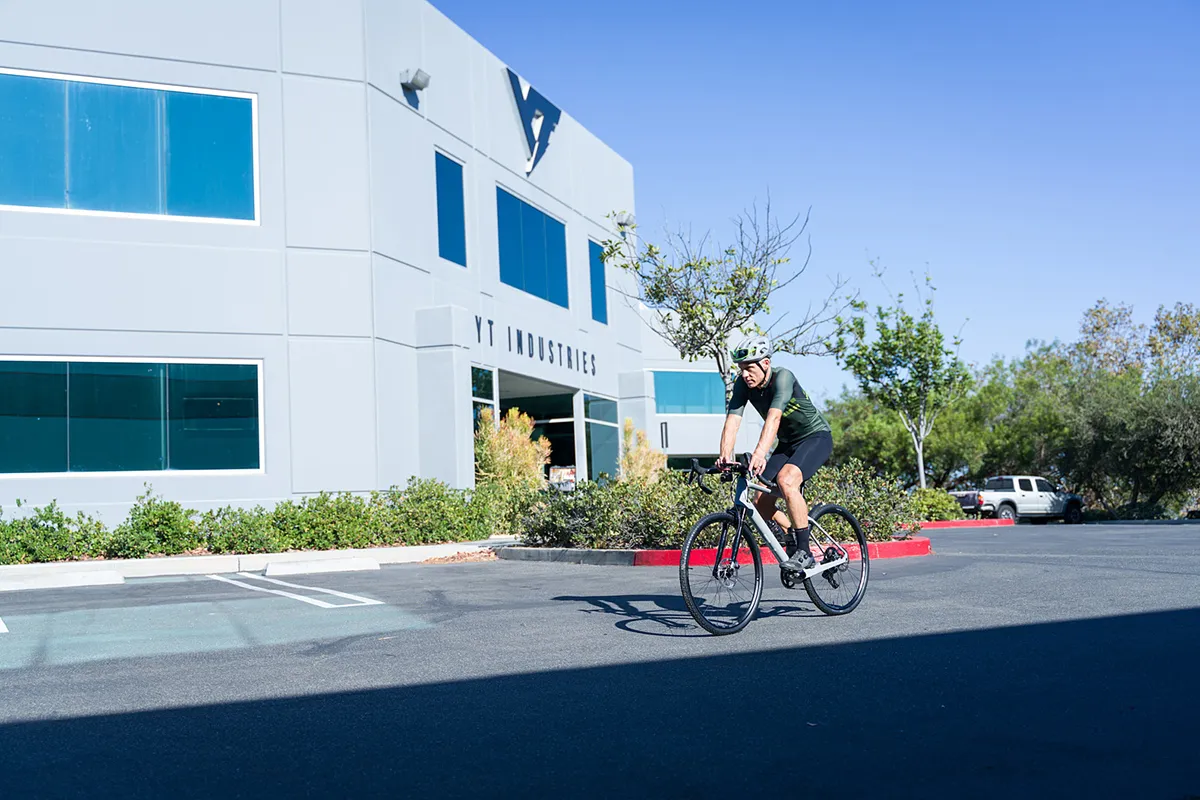
However, as soon as my front wheel was bouncing down and around the singletrack, the position felt a lot more natural.
Since the front end sits relatively high, I spent most of the time in the flared drops, particularly when descending.
While nowhere near as slack as another ‘mountain biker’s gravel bike’, the Evil Chamois Hagar, the Szepter is laid back enough in the head tube to be more confident than a gravel race bike when rattling down a choppy descent.
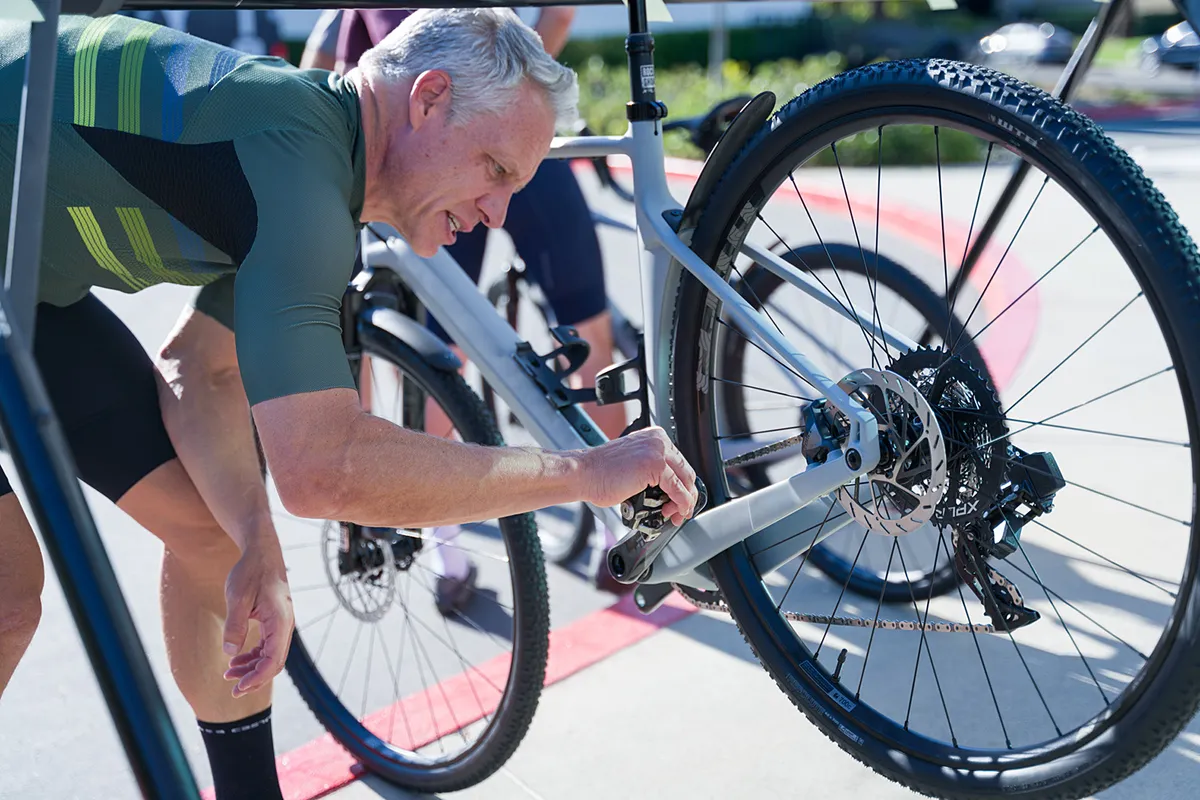
The ‘going down confidently’ part I fully expected, just looking at the geometry.
What I didn’t expect was how advantageous the bike’s geometry would be when tackling punchy climbs. Sitting forward over the bottom bracket puts you in a powerful position on double-digit gradients.
YT Szepter Core 4 geometry
| | S | M | L | XL | XXL |
|---|---|---|---|---|---|
| Seat angle – effective (degrees) | 74.3 | 74.4 | 74.4 | 74.4 | 74.4 |
| Head angle (degrees) | 69.3 | 69.4 | 69.4 | 69.4 | 69.4 |
| Chainstay (mm) | 425 | 425 | 425 | 425 | 425 |
| Seat tube (mm) | 450 | 480 | 500 | 530 | 550 |
| Top tube (mm) | 558 | 578 | 593 | 613 | 628 |
| Head tube (mm) | 125 | 145 | 170 | 190 | 205 |
| Bottom bracket drop (mm) | 61 | 61 | 62 | 62 | 62 |
| Wheelbase (mm) | 1,054 | 1,076 | 1,095 | 1,115 | 1,132 |
| Stack (mm) | 650 | 669 | 697 | 711 | 754 |
| Reach (mm) | 384 | 398 | 407 | 422 | 433 |
How plush is plush enough?
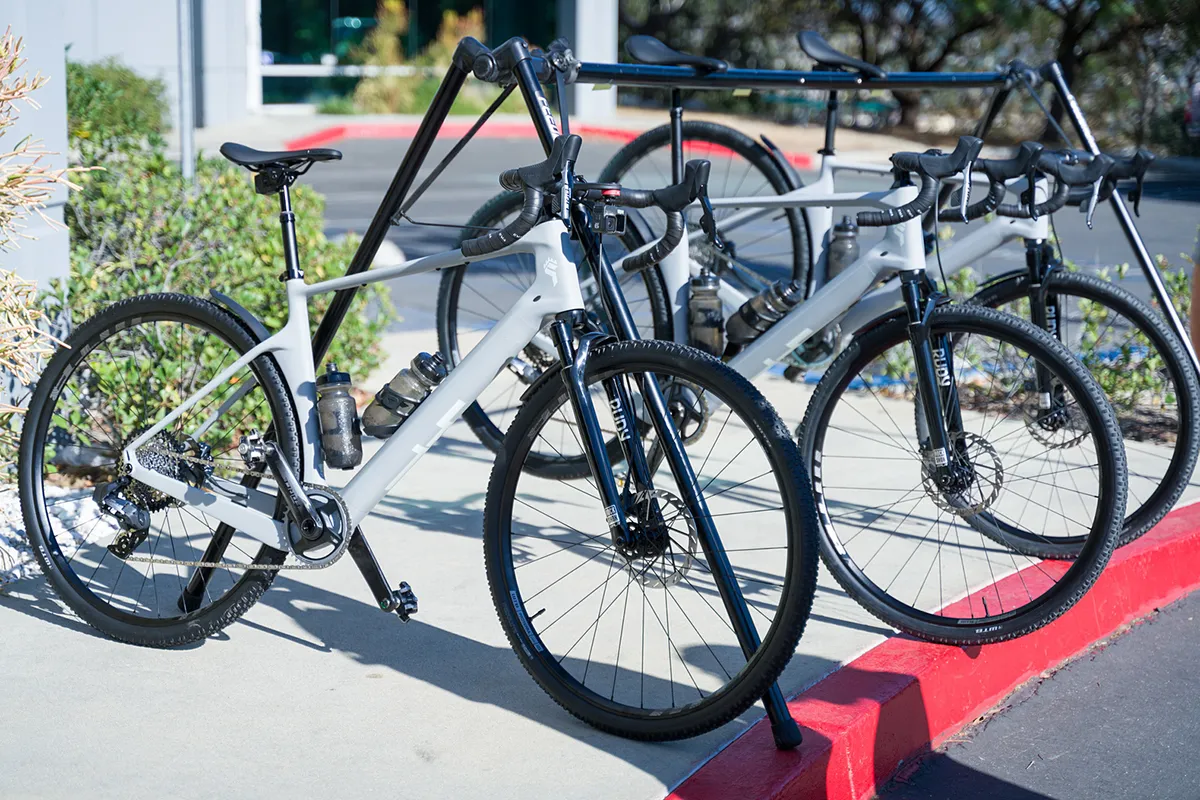
The RockShox Rudy Ultimate XPLR is a 40mm air-sprung fork with a lockout. It’s on the shorter end of gravel forks, with Fox having 40 and 50mm options, and MRP offering 40 and 60mm models.
Four centimetres isn’t a huge amount of travel – it won’t make big rocks or massive holes disappear. However, it definitely smooths out the chatter of washboards so pervasive to many dry gravel roads with heavy auto traffic.
For our second day of testing, YT flew us by helicopter (!) to Catalina Island, just off the coast of California.
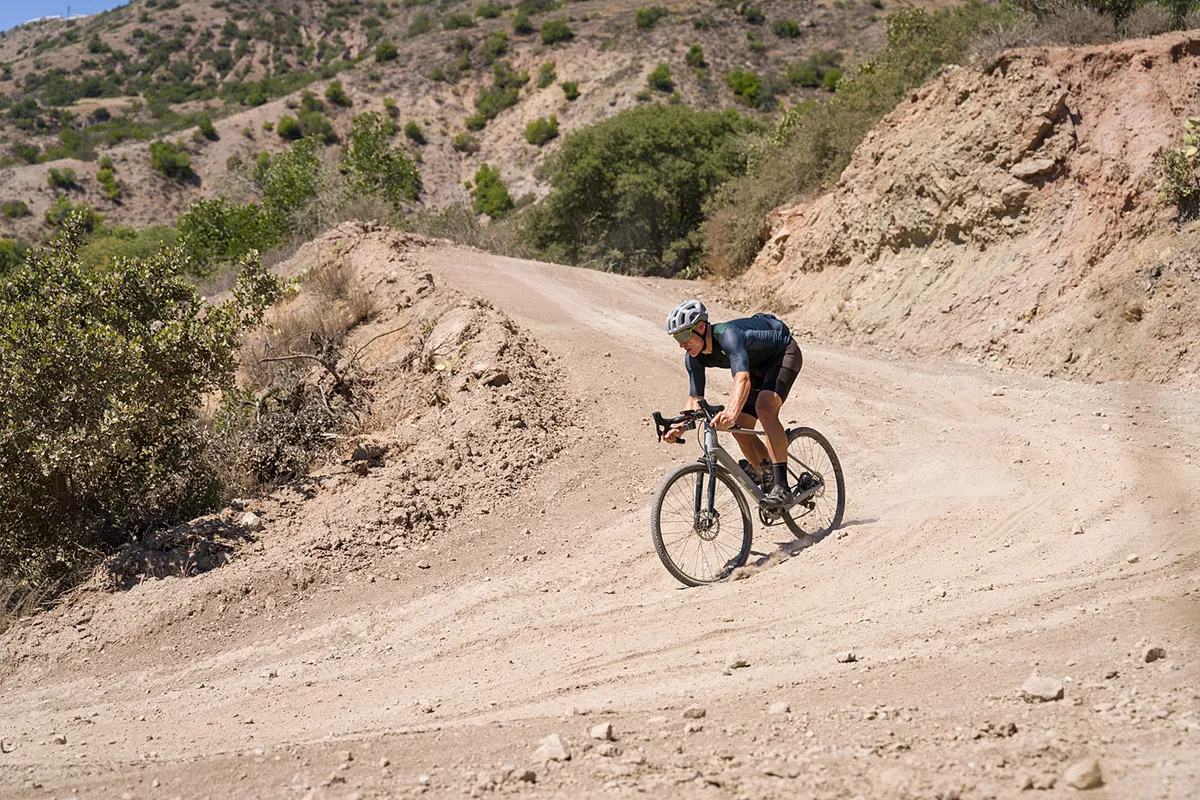
Traffic on the island consists almost entirely of tourist trucks. The upside is there are hardly any cars, but the downside is these big trucks generate nasty stutter bumps in seemingly all the dirt corners on the mountain roads.
This, of course, made for some great testing.
I lost a water bottle a couple of times on these stutter bumps, and was grateful for not only the 40mm of air suspension but the padded bar tape as well.
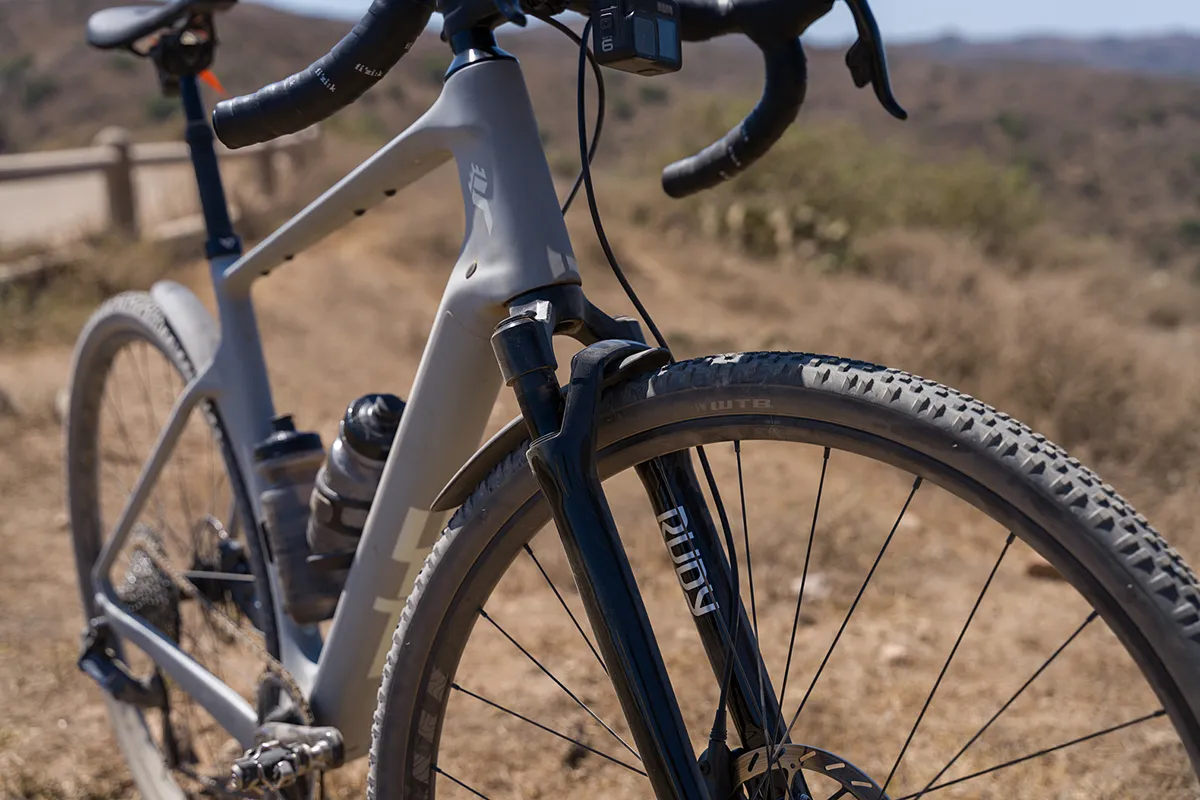
Climbing out of the saddle didn’t feel inefficient – having the damper and fork tuned for my weight reduced the bob effect. It’s a very different experience than you get on the undamped leaf-suspension Lauf fork, for example.
When on a pavement, I’d flip the lockout switch atop the fork leg for a fully firm front end. This made the bike feel like any other gravel bike when climbing out of the saddle in terms of front-end leverage.
To drop, or not to drop
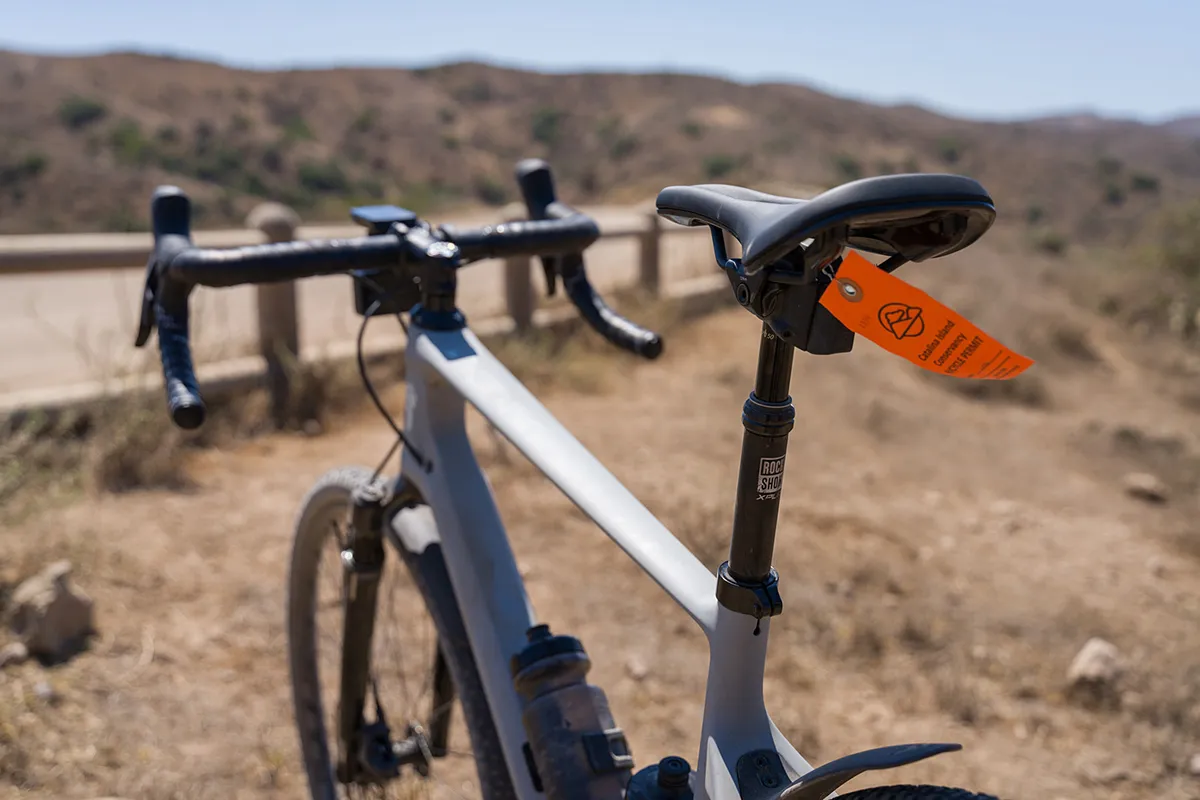
So, gravel dropper posts. They’re 'a thing'. But are they a good thing? For the singletrack portion of our test, I’d say yes. Being able to drop the saddle to carve through switchbacks was nice.
But how much of your gravel riding is on singletrack? That’s really what answers the dropper question.
SRAM’s dropper acts as a suspension post when lowered by just 1mm or more. So, in theory, you could have a full-suspension gravel bike by setting your saddle down slightly and pedalling along.
However, the reality is that if you’re going to use a dropper, you’ll lower it all the way, then pop it back up into place. Resetting it each time to just under maximum extension without messing with your saddle height and pedalling position just isn’t realistic.
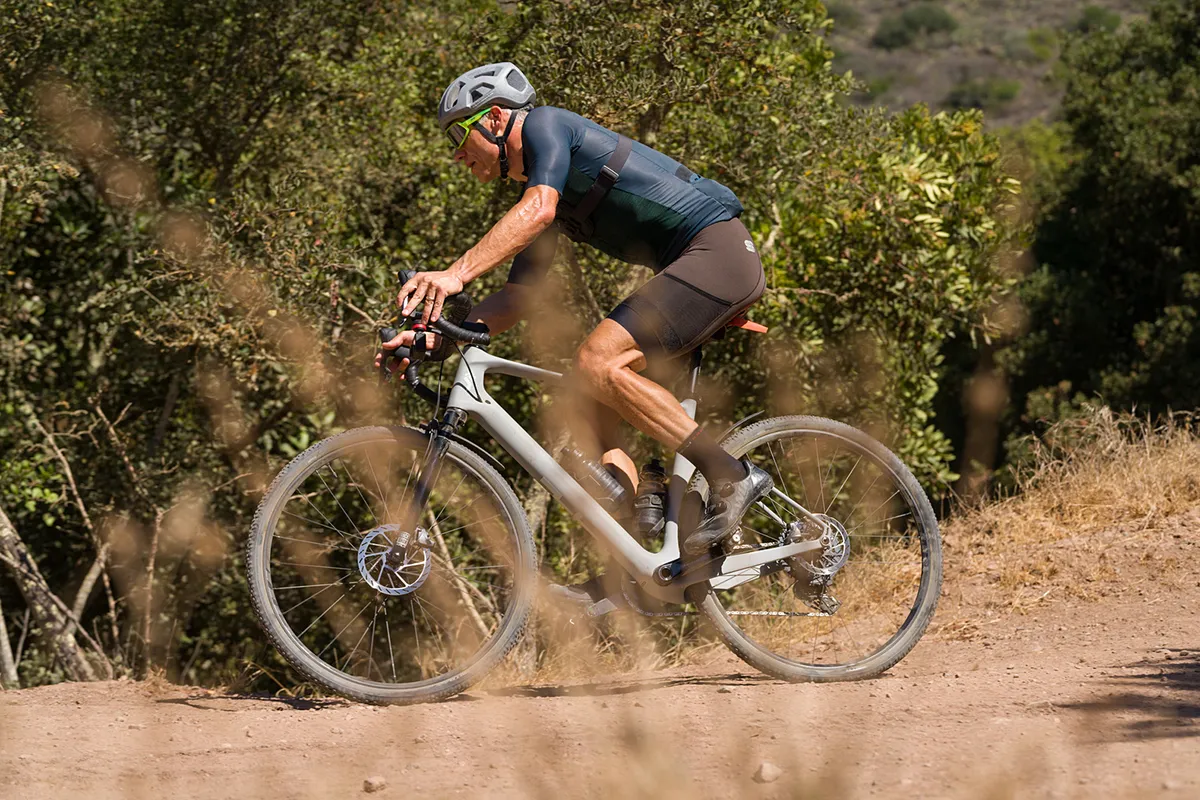
That said, for its primary purpose – enabling you to lower your backside and centre of gravity – the dropper does help YT achieve its mountain-bike-lite aims with the Szepter.
Often, dropper posts on gravel bikes compromise the rear comfort, removing the flex of a long carbon post from the equation.
Again, I was pleasantly surprised by how comfortable the Szepter felt in the saddle. It’s unclear how much comfort could be attributed to the supplied SDG saddle versus a bit of give in the post and frame.
The bottom line is that YT says there’s 8mm of effective movement at the saddle: it’s noticeable and quite welcome.
Light price, heavy bike

Markus Flossmann started YT Industries with a mission to deliver high-quality bikes at reasonable prices, and that certainly continues here.
A SRAM Force-equipped bike with a RockShox Rudy Ultimate XPLR fork selling for £4,399 / $4,499 / €4,499 represents a good deal on paper.
For contrast, that other German direct brand, Canyon, sells its Canyon Grizl CF SLX 8 eTap Suspension with SRAM Force for £4,949 / $6,499.
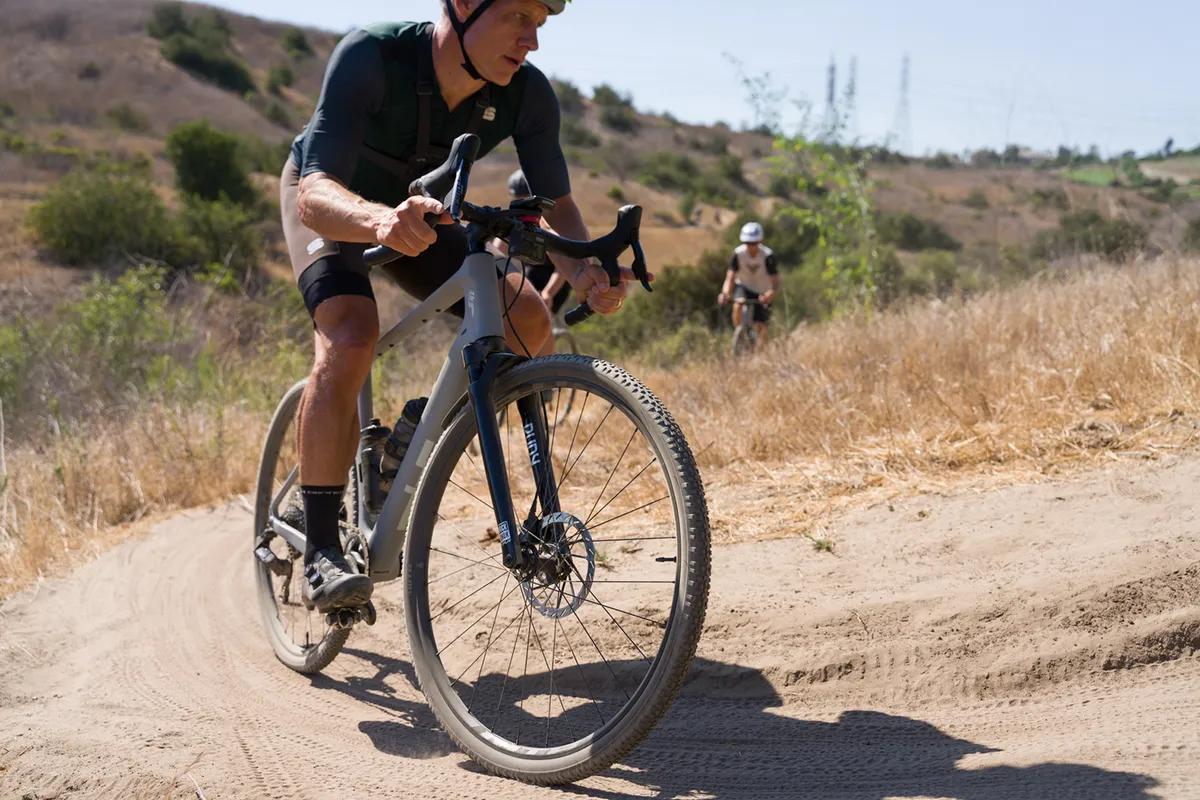
Most brands selling through shops come with substantially higher prices than that.
But while the bike won’t lighten your wallet too much, it will weigh down the scales a bit. My size large test bike came in at 10.1kg / 22.3lb.
Of course, some of that can be attributed to the suspension fork and dropper post, and some comes courtesy of the alloy wheels.
YT Szepter Core 4 bottom line
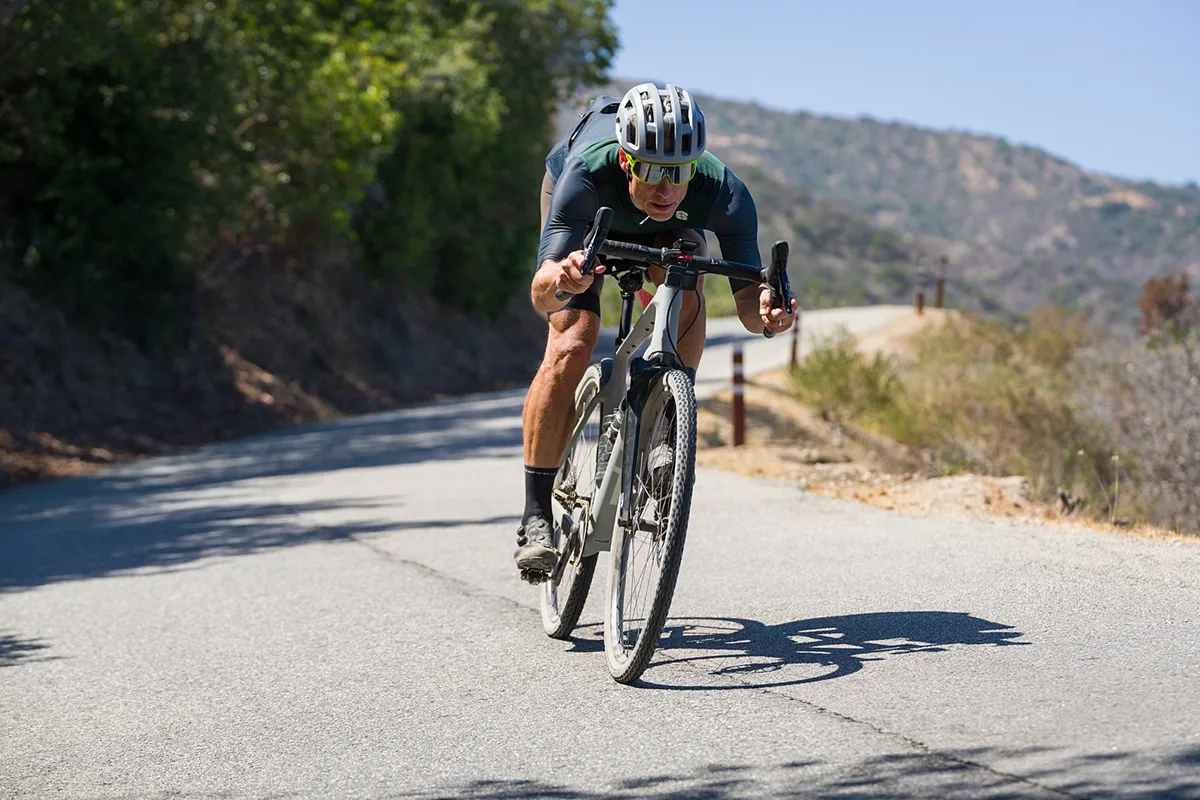
In a crowded gravel market, YT appears to have differentiated itself with the Szepter.
It’s not a race bike. It’s not a bikepacking adventure bike. But my first rides indicate it's a fun bike to rip around on, particularly when there is a bit of elevation involved.
Product
| Brand | yt_industries |
| Price | 4499.00 EUR,4399.00 GBP,4499.00 USD |
| Weight | 10.1000, KILOGRAM (L) - |
Features
| Fork | RockShox Rudy Ultimate XPLR |
| br_stem | Zipp Service Course SL, 70mm (all sizes) |
| br_frame | Ultra Modulus Carbon Frame |
| Tyres | WTB Resolute, 42mm |
| br_cranks | SRAM Force 1 Wide, 38t |
| br_saddle | SDG Bel-Air V3 Overland |
| br_wheels | WTB Proterra Light i23 |
| br_shifter | SRAM Force eTap AXS HRD |
| br_cassette | SRAM XG1271 Wide, 10-44, 12-speed |
| br_seatpost | SRAM Reverb AXS XPLR, 50mm |
| br_handlebar | Zipp Service Course SL XPLR, 115mm drop, 11-degree outsweep, 5-degree flare |
| br_availableSizes | S, M, L, XL, XXL |
| br_rearDerailleur | SRAM Force XPLR eTap AXS |
